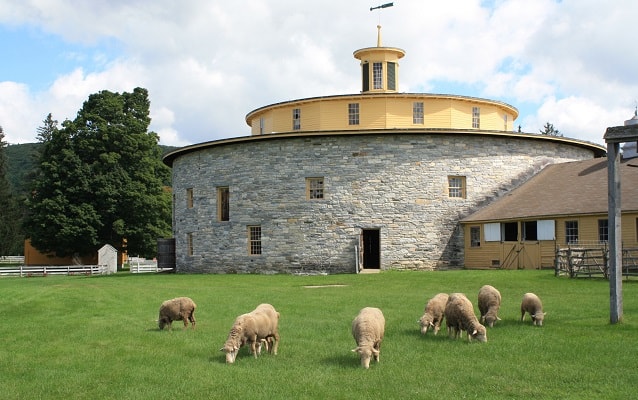Last updated: February 7, 2018
Place
Hancock Shaker Village

Photo courtesy of the Massachusetts Office of Tourism
Hancock Village was established in western Massachusetts in the late 1780s and thrived as an active Shaker community until the 1950s. Hancock was divided into six family groups, and was comprised of communal dwellings, craft shops, a meetinghouse, and barns. Like most Shaker communities, building design was driven by function, utility, and efficiency.
The Round Stone Barn, the most notable Hancock building, is the only Shaker barn of its kind. The circular barn was built in 1826, and was a curiosity to Shakers and "the world's people" alike - such as Nathaniel Hawthorne and Herman Melville. Hay was unloaded from wagons into a wooden lined central storage area on the top floor spanning 95 feet in diameter. One level down, 50 or more cattle were kept in stanchions. Finally, at the bottom level lay the manure pit, accessible by wagon. Unfortunately, the original barn burned 1864 and was quickly rebuilt. The building underwent a complete restoration in 1968.
Hancock opened as a living history museum in 1961. It contains 20 historic buildings, extensive gardens, and a significant collection of Shaker artifacts. The village also includes Shaker craft demonstrations, historic breeds of livestock, and its restored 19th-century water system. The Center for Shaker Studies, opened in 2000, offers two exhibition galleries to the public, one dedicated to Shaker gift drawings.
